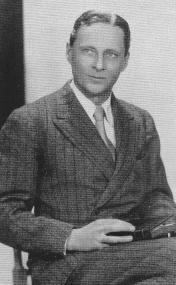Name Francis Yeats-Brown Role Author | Parents Montague Yeats-Brown | |
 | ||
Died December 19, 1944, London, United Kingdom Movies The Lives of a Bengal Lancer Books The Lives Of A Bengal L, Caught by the Turks, Martial India, European jungle, The Eight Steps to Yoga: As Similar People Achmed Abdullah, Grover Jones, John L Balderston, Henry Hathaway, Maxwell Anderson | ||
Major Francis Charles Claypon Yeats-Brown, DFC (15 August 1886 – 19 December 1944) was an officer in the British Indian army and the author of the memoir The Lives of a Bengal Lancer, for which he was awarded the 1930 James Tait Black Memorial Prize.
Contents
Life and career
Yeats-Brown was born in Genoa in 1886, the son of the British consul Montague Yeats-Brown. He studied at Harrow and Sandhurst. When he was 20 he went to India, where he was attached to the King's Royal Rifle Corps at Bareilly in present-day Uttar Pradesh. He was then transferred to the cavalry and sent to the perennially turbulent North West Frontier region. His time there engendered in him a sympathy for the Muslim point of view, and in later years he would support the creation of an independent Pakistan.
During the First World War, Yeats-Brown saw action in France and in Mesopotamia, where he was a member of the Royal Flying Corps. His acts of bravery gained him the DFC. In 1915, his plane was damaged on landing on a sabotage mission outside Baghdad, and he spent the following two years as a prisoner of war. This provided the material for his first book, Caught by the Turks (1919).
Following a temporary commission in the Royal Air Force, he returned to the Indian Army in August 1919. He retired from the army in 1924, and joined the staff of the Spectator magazine as assistant editor. He quit the post in 1928. The Lives of a Bengal Lancer, his most famous book, was published in 1930. The book is a memoir of his time in India from 1905 to 1914, with an emphasis on cantonment life at and around Bareilly. An immediate hit with readers and critics, the book won the James Tait Black Award that year, and was turned into a successful 1935 film of the same name, starring Gary Cooper. In 1936, he published Lancer at Large, in which he showed an affinity for the principles of yoga.
During the 1930s, Yeats-Brown also became involved in right-wing politics. He was a member of the January Club and the Right Club, and wrote newspaper articles in praise of Francisco Franco and Hitler, asserting that Hitler had solved Germany's unemployment problem. He also wrote articles for New Pioneer, a far-right journal controlled by Viscount Lymington and closely linked to the British People's Party.
When the Second World War broke out in 1939, Yeats-Brown took up a commission again. During 1943–44, he toured the camps of India and the battlefields of Burma, gathering material for a book entitled Martial India. He died in England in December 1944.
